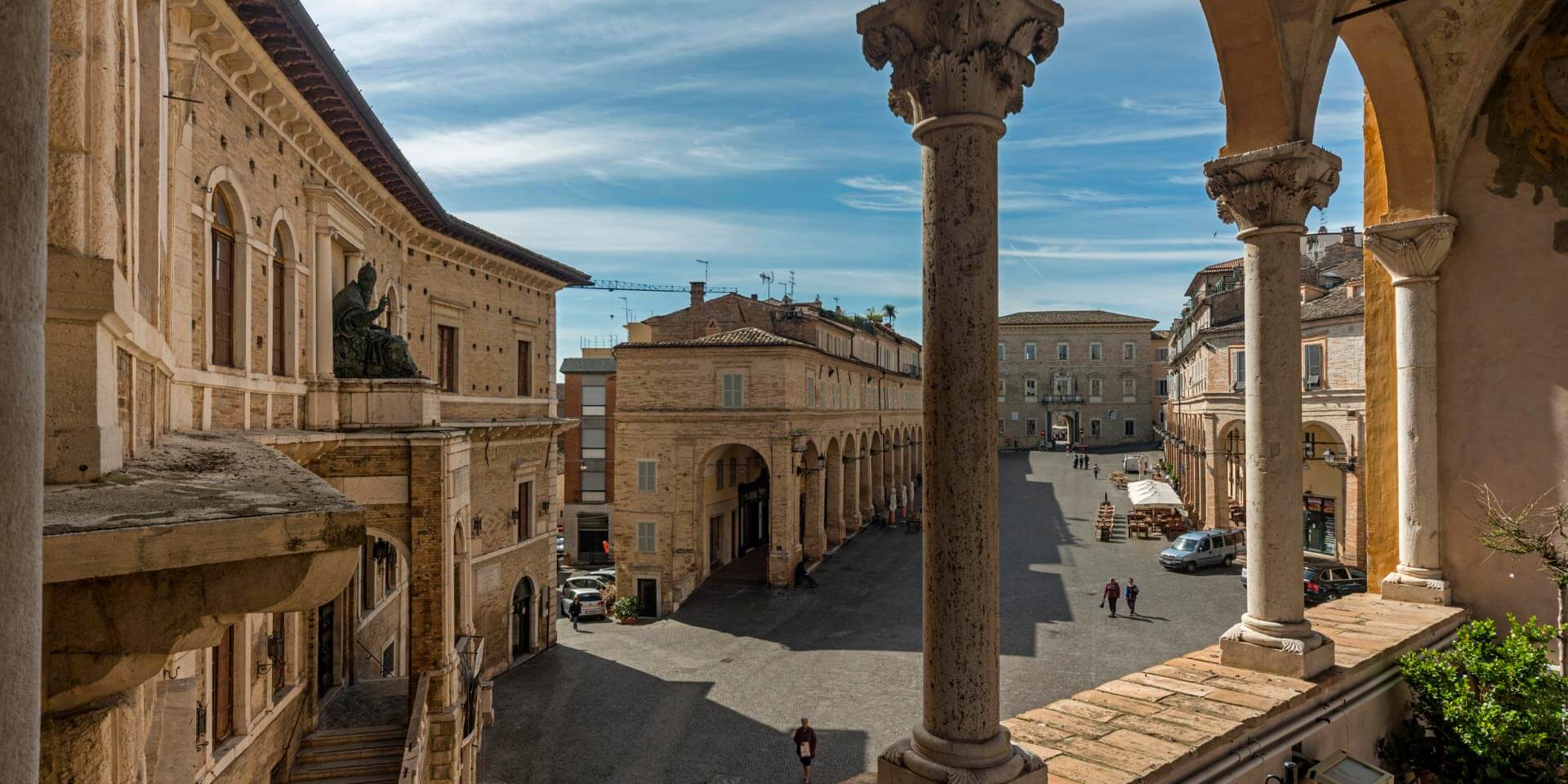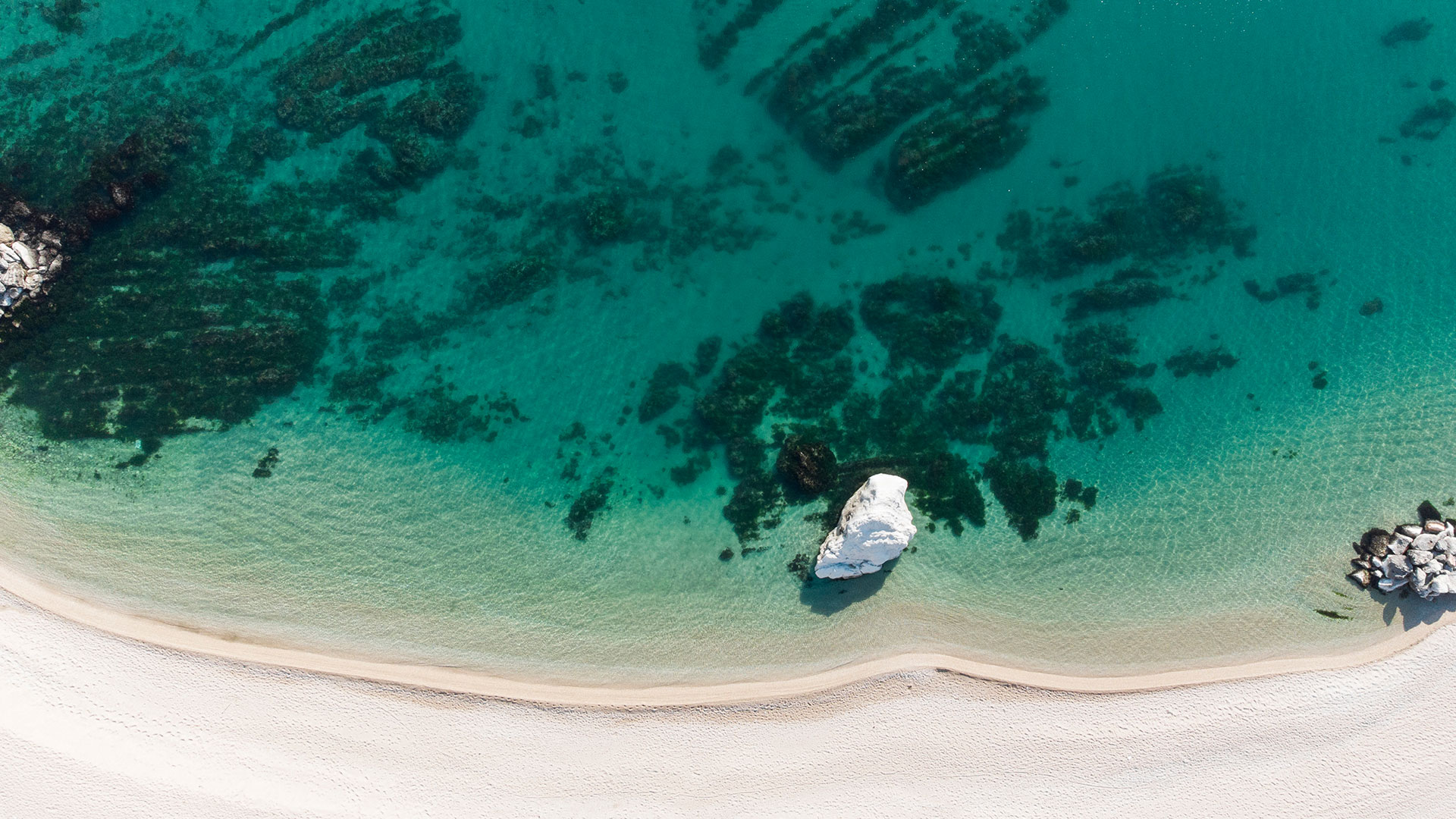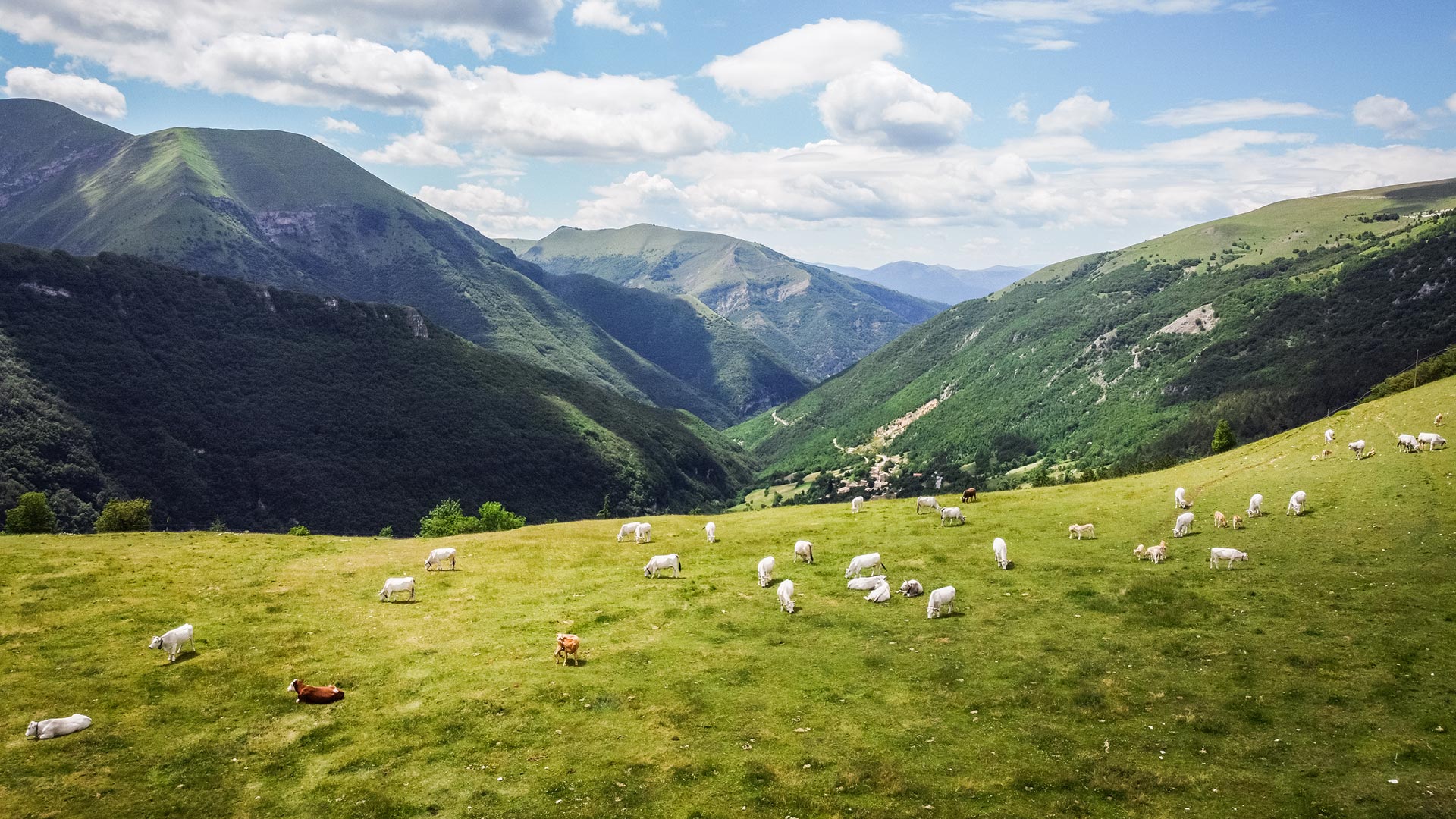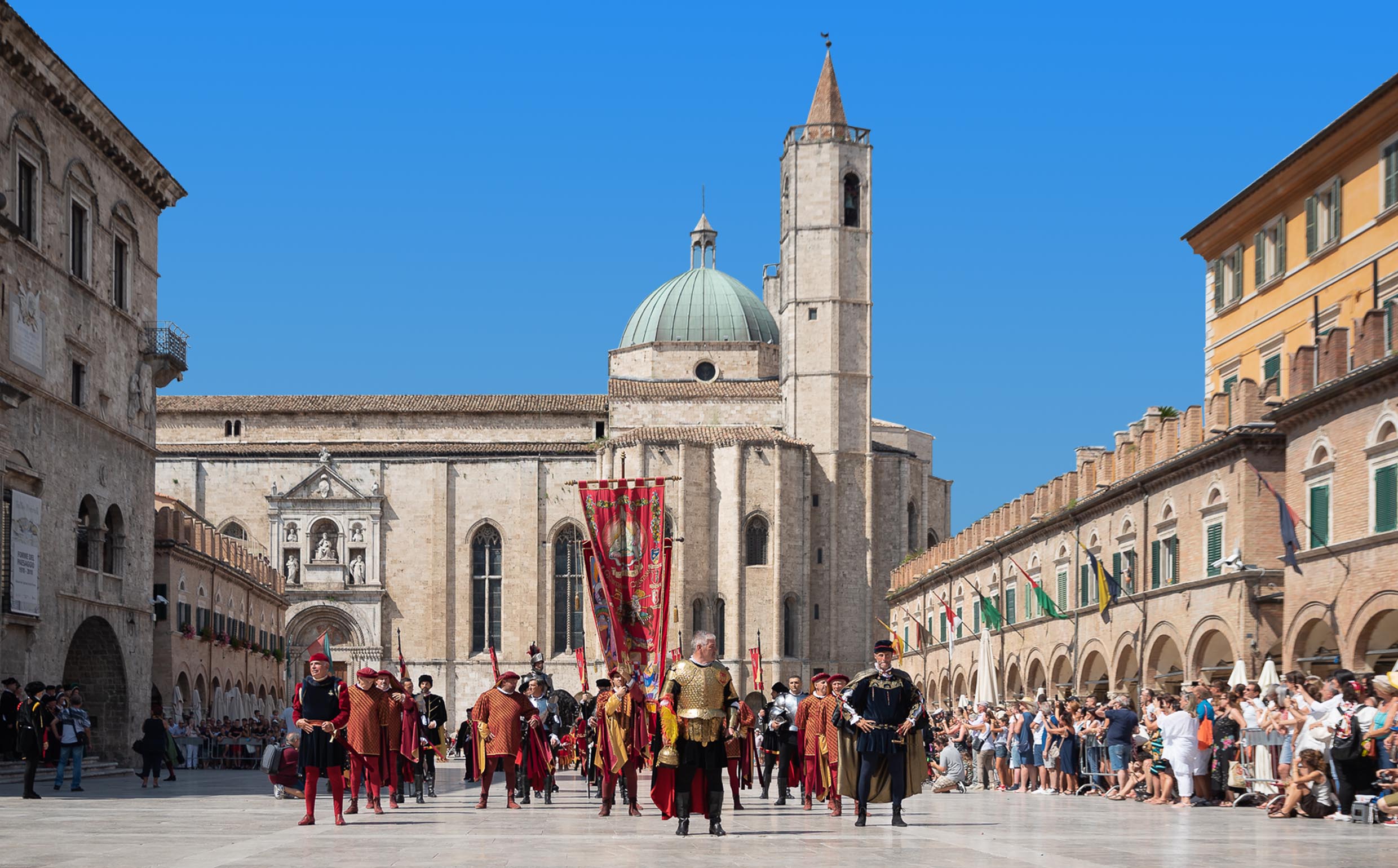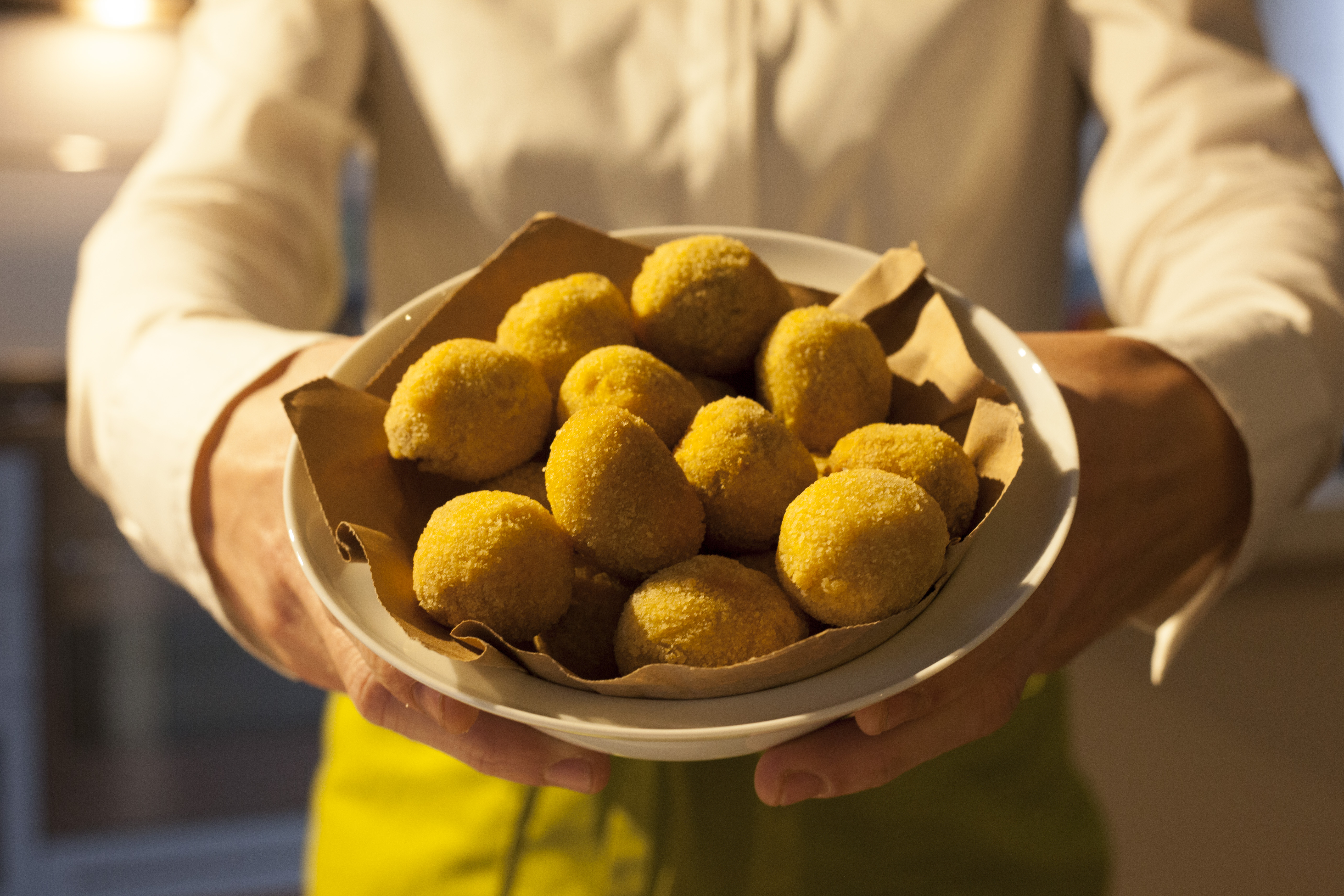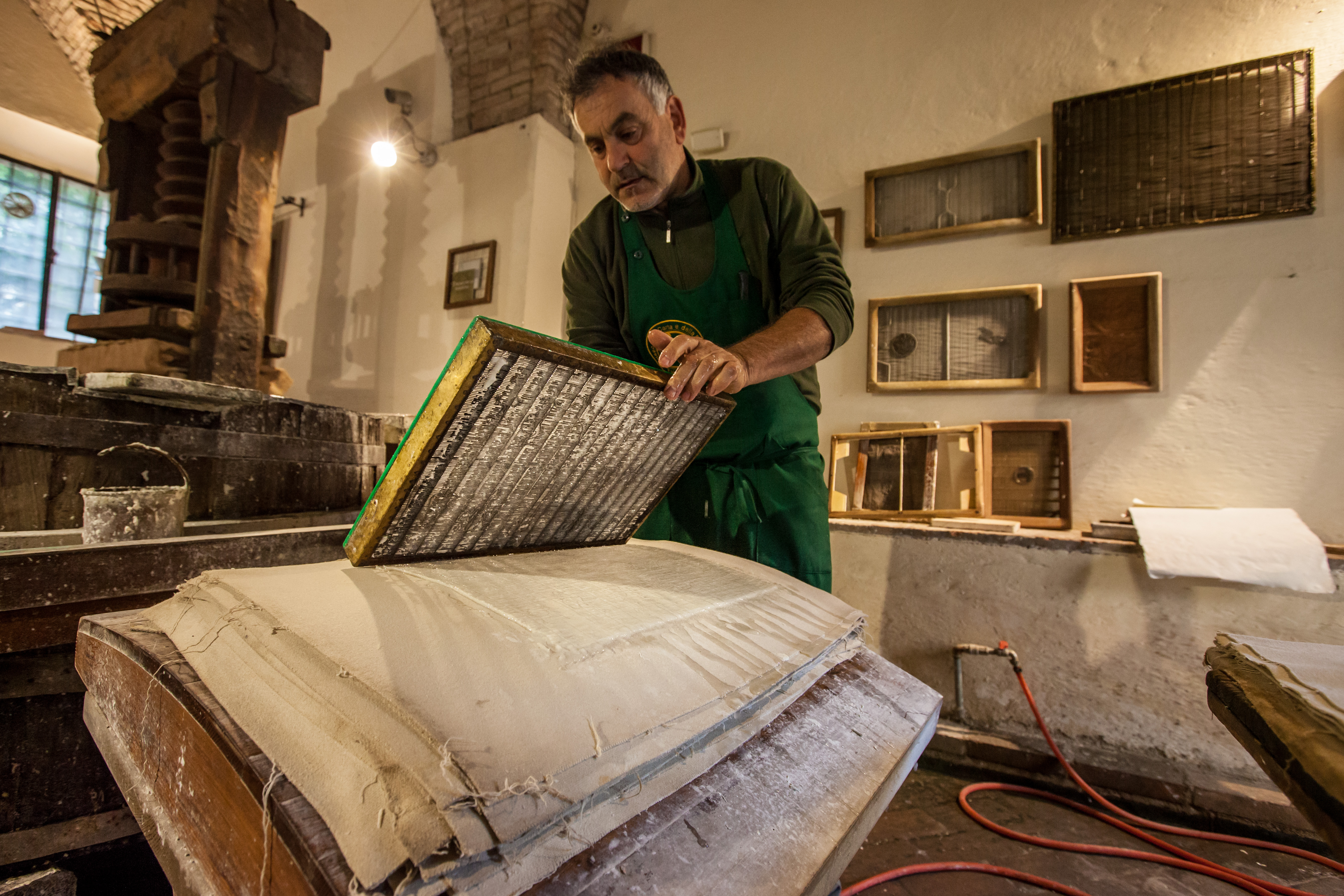Fermo - Marche Tourism
Back Fermo
Fermo
Fermo is situated on the slopes of Sabulo Hill (319 above sea level). The city is now divided into two parts: the old town, that has remained almost intact through the centuries, and the new area.
SEASIDE HOLIDAY OFFER: Fermo features the seaside resorts of Marina Palmense (3 km of beach to the south of Porto San Giorgio) and Lido di Fermo, Casabianca and Lido San Tommaso (4 km of beach to the north). The beaches at Lido di Fermo and Marina Palmense are both pebbled and sandy; the area is full of camping sites, tourist villages and apartments and equipped with many facilities, like bars, restaurants and nightclubs. The resorts are surrounded by green and lush hills, protecting the coast from the winds. There's a bike path running from Casabianca to the village of San Tommaso.
ATTRACTIONS: The heart of the town is the magnificent Renaissance Piazza del Popolo, formerly Piazza Grande, where there is the sixteenth century Palazzo dei Priori, whose main entrance is topped by Sansovino's grand statue of the Bishop of Fermo who was to become Pope Sixtus V. Now it is home to the Municipal Art Gallery, boasting valuable paintings of the Venetian and Marche schools and the "Nativity" by Rubens, and the Sala del Mappamondo (Hall of the Globe), taking its name from the world map drawn by the cartographer Moroncelli of Fabriano in 1713; the building also houses the archaeological section "From the Villanovians to Piceni"; further remarkable palaces surrounding the square are: the Palazzo degli Studi, housing the town library "Spezioli" with 400.000 volumes, and the Apostolic Palace, built in 1532 as the residence of the Governors and of the papal legates. Fermo's pride is also the prestigious "Teatro dell'Aquila", a fine example of eighteenth century architecture. Also worthy of note are the underground piscine romane (roman pools) which comprise thirty magnificently preserved underground chambers built between 41 & 60 BC to conserve and purify the town's water supply, and regarded as the finest example of their kind in Italy. Climbing up Girfalco hill, you reach the 13th century Romanesque-Gothic Cathedral, with its richly decorated interior and fine rose window. You cant' miss: the Church of San Francesco, which houses fragments of frescoes by Giuliano da Rimini; the church of San Domenico, rebuilt in 1233 on the area where once stood the church of St. Thomas of Canterbury; the Church of St. Agostino, decorated with nice frescoes by Giotto's school.
The most famous local products are: caciotta, a top quality cheese made from both ewe and cow's milk; ciauscolo ( soft cured pork) and vin cotto (sweet "cooked" wine). The frustingo is the typical Christmas cake. It is made with dried figs, raisins, almonds, walnuts, cooked wine, flavored with cocoa, coffee, rum, grated orange and lemon peel, candied fruit and spices like cinnamon and nutmeg. The most imnportant event taking place in Fermo is the feast of the Assumption, celebrated on August 15. During the summer period the Piazza del Popolo plays host to Fermo's music festival featuring some of the world's finest performers, as well as outdoor markets.




